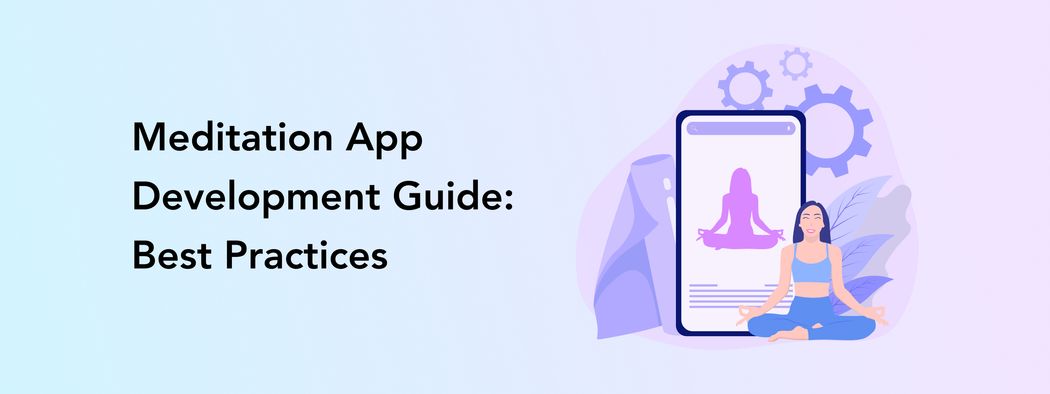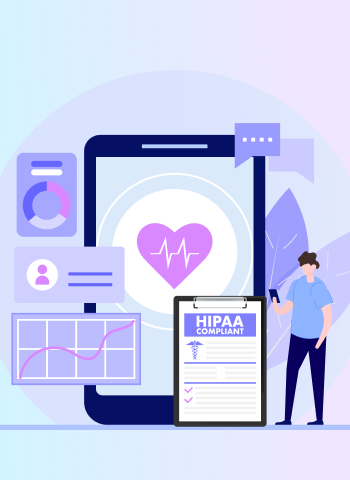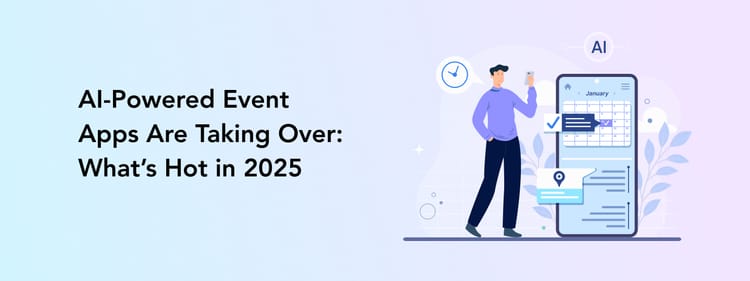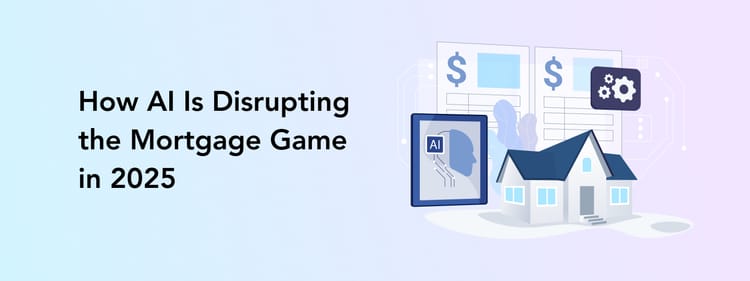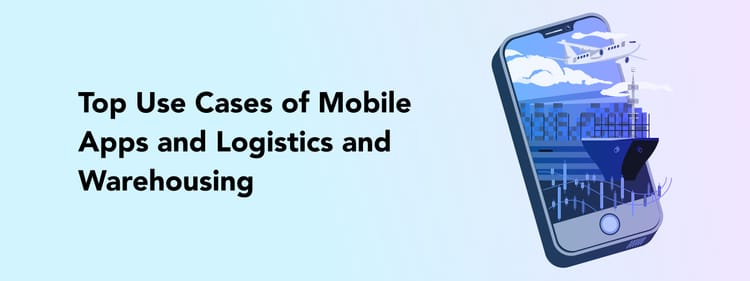Work-related stress, fast rhythm of life, everyday worries, endless flow of information from news and social media. All these make us anxious, bring distractions, and simply worsen our quality of life. Meditation is a helpful practice to get back on track with life and restore inner balance, proven to reduce stress levels and improve attention.
Luckily, today we don’t need to commit to paid meditation classes or try to practice meditation on our own. Dedicated mobile applications help users navigate meditation exercises and get psychological relief here and now.
Thanks to high levels of convenience and accessibility, there is a great need for meditation apps. It’s high time to consider meditation app development as a health & wellness business because the revenue of these apps is expected to show an annual growth rate (CAGR 2023-2027) of 11.04%, resulting in a projected market volume of $7.06 billion by 2027.
This article lists the must-have features for a successful meditation app, describes all the necessary steps of custom meditation app development, offers working monetization strategies, and discusses the possible cost of meditation mobile application development.
Types of Meditation Mobile App
With the Headspace app and the Calm app being the leaders of the meditation solutions market, the App Store and Play Market are full of meditation applications for all requests and tastes. Let’s start our meditation app development guide with a look at the most popular meditation app types.
Guided meditation apps
A guided meditation app is the most popular meditation solution type out there. These applications usually offer audio or video meditation instructions divided into categories and complexity levels. Categories might include psychological requests, such as reducing anxiety, dealing with stress, improving concentration, becoming more self-aware, overcoming a loss, and others.
Mindfulness apps
Another popular type of meditation app is mindfulness solutions. These are more holistic products that not only offer guided meditations, but also soothing sounds for better sleep, reading resources on mental health and relationships, breathing exercises, daily affirmations, habit trackers, and other features.
Yoga apps
For those willing to offer help with the users’ psychological and physical health at the same time, yoga app development is a great option. As meditation practices developed from yoga, they often walk hand in hand, so consider yoga mobile app development too. Users can first explore some features of a yoga app, like yoga asana video tutorials, and then proceed to breathing exercises and meditation or choose any of the sessions separately.
Sleep apps

A good night’s sleep is an integral part of our well-being, so why not offer better care of it with the help of an app too? Sleep meditation app development usually features relaxing sounds and stories to fall asleep quicker as well as sleep tracking to analyze users’ sleep patterns and give advice on how to get a better quality sleep.
Meditation App Development: Must-Have Features
No matter which meditation app type you decide to go with, there are some must-have meditation app development features that any app type should have to attract and retain users.
User profile
A user profile with all the personal details and preferences is among the meditation mobile app development features a good solution can’t exist without. A user profile makes it easier to navigate the app and saves the user’s time as it usually has the preferred payment methods, personal information, login ways, in-app history, and more. As a result, users can concentrate on the app’s content and not waste time logging in or adding payment options each time.
Guided meditation library
What are the main features of a meditation app? You know it: it’s a library of guided meditations and other content. Guided meditations usually come as audio as the users will close their eyes to meditate and relax. You can also integrate videos for yoga&meditation practices and to show beginner users comfortable positions.
Category and complexity level sorting
When designing your meditation app library, it’s best to add some meditation filters based on the complexity level (beginner, intermediate, advanced) and request type (relaxation, concentration, stress relief, energizing, etc).
Progress tracking and gamification
It is crucial to keep your users motivated to carry on with the meditation practices so they can feel a positive change. Plus, gamification is one of the best user retention techniques. Progress tracking and meditation app gamification features are good ways to engage users in your app.
Users can see how many meditations they have completed in total or try to keep a strike of everyday meditation practices. Plus, you can introduce challenges for users to take, like 30 days of meditation or completing all the practices from one section.
Push notifications
When it comes to the best features for a meditation app, push notifications are definitely on the list. Notifications remind users to complete their practices daily and not abandon the app. The messages can vary, from “Don’t use your 15-day meditation strike” to “Feeling overwhelmed on a Monday morning? A calming meditation is what you need to start the work week right.”
Save and download options
Many users want to have their favorite meditation practices always at hand, whether they have an Internet connection or not. Maybe someone found a great spot for meditation while walking in the woods or needs to calm down during a flight with no Wi-Fi connection? That’s why saving favorite practices and downloading them for listening offline definitely should be an option in your meditation application.
Relaxing sounds and stories
You can go the extra mile and offer users relaxing experiences beyond meditation. These can be ambient sounds for focusing or calming, like a forest imitation, tranquil piano or guitar melodies, and nature sounds.
Additionally, adults enjoy bedtime stories too! Relaxing stories can help users fall asleep quicker or simply wander around in their minds before bed. You can add stories of different durations and themes to cater to a variety of requests.
Recommendations
A manually set or AI-based recommendations section will engage users in trying out new meditations based on their history and preferences. You can place the recommendations on the home screen as well as under the current meditation player to let users browse through similar options and continue their meditation experience.
5 Essential Steps of Meditation Mobile App Development
Now that you have a clear idea of which features your application can’t be released without (if you want to make it to the top, of course), let’s explore all the essential steps of meditation mobile app development that you will complete with your chosen dedicated development team to hire.
Product discovery and idea validation
The first step in meditation software app development is product discovery and idea validation. Before spending money on a new meditation app, it’s best to make sure that the idea has a high chance to work out and will find its target audience.
This includes conducting market research to investigate which similar apps exist out there, how popular they are, and which features attract the users. Of course, you and your development team will also establish what’s missing to gain a competitive advantage.
At Perpetio we also draft a profile of a typical app user called a user persona. With several hypothetical users, we can determine which pain points and requests an app should satisfy.
UI/UX design
Creating a meditation app design that promotes relaxation is crucial for user engagement. The UI/UX design phase is all about crafting an intuitive and visually appealing interface. The design should incorporate soothing colors, serene imagery, and intuitive navigation to enhance the meditation experience and not distract the user. Additionally, it should be optimized for various devices and screen sizes to ensure a seamless user experience.
A mobile app development team structure will include professional UI/UX designers who will work on the first app design prototypes (wireframes), take all of your feedback into account, and present both the user experience (UX), including user navigation and app structure, and user interface (UI) design, responsible for app’s visual components, like typography and color palette.
Mobile app development
Once the UI/UX design is finalized, a development team starts the mobile app development process. This involves coding the app using the chosen technology stack, like a programming language and API integration. For example, you can give a preference to native mobile development or go with the cross-platform approach to receive one source code suitable for both iOS and Android.
The team will work on implementing the features you have selected in the earlier stages as well as build the interface of the app according to design and backend. Custom meditation mobile app development ensures that the app meets the specific requirements and desired user experience.
Quality assurance
Careful quality assurance is an essential step to create a meditation mobile app. This stage involves conducting thorough testing and debugging to ensure the app functions work smoothly and without any glitches. Any bugs or issues identified during this stage are fixed to deliver a stable and reliable meditation app.
The testing process includes checking the app’s performance, security, accessibility, usability, and other parameters. Plus, a QA specialist also checks if the final app matches all the original requirements and offers all the features as intended.
Launch
The final step is to launch a meditation app. This involves pre-launch activities like creating an effective marketing strategy to generate awareness and attract users. The launch phase includes app store optimization, promotional campaigns, and outreach to meditation communities and influencers. You and your team should also collect the meditation app analytics and reporting to gather insights and make improvements for future updates.
Monetization Strategies for a Meditation Mobile App
Let’s now turn to a question no less important than the very yoga and meditation app development. Surely, you might have other profit sources for your company and an app is just a marketing tool. But that’s rarely the case; more often, an app is a great opportunity to generate some revenue. What are your options when it comes to meditation app monetization strategies?
Freemium model
One popular monetization strategy for a meditation app is the freemium model. You can offer a basic version of the app for free, allowing users to access a limited set of features and content. To unlock premium features such as advanced meditation programs or exclusive content, users are encouraged to upgrade to a paid subscription or make in-app purchases. This strategy allows users to experience the app's benefits and encourages them to invest in the enhanced experience offered by the premium version.
In-app advertising
Another effective monetization strategy for a meditation app is incorporating in-app advertising. This means showing advertisements in the app's interface. Advertisers interested in reaching a meditation-focused audience can place ads that are relevant to the users' interests. By partnering with advertisers, the app can generate revenue through ad impressions or clicks. However, it's essential to strike a balance between providing a seamless user experience and demonstrating ads to avoid disrupting the app's calming environment and distracting users from their experience.
In-app purchases
The option to make in-app purchases is a common monetization strategy for meditation apps. This approach allows users to buy additional content or features directly from the app. For instance, users might have the opportunity to purchase meditation courses, separate guided meditations, or relaxing music packs.
Paid app with a free trial
Offering a paid app with a free trial is another effective monetization strategy for a meditation app. This approach involves charging users to download the app plus providing a limited period, such as a week or a month, to try it for free. During the trial, users can explore the app's features and content without commitment. At the end of the trial period, users have to subscribe or purchase the full version to continue accessing all the app's benefits. This strategy allows users to experience the app's value before making a purchasing decision and motivates them to buy the app as they get to know its benefits.
Best Practices

Time to shift from theory to practice: let us introduce one of our recent UI/UX design concepts. This is a meditation and sleep app that integrates all the best features we talked about earlier, such as
- Recommendation section on the home screen
- Progress tracking
- Meditation practice categorization based on user request (anxiety, balance, focus, etc)
- Calming sounds section
- Sounds for better sleep
- Guided meditation courses (spiritual growth, motivation, etc)
- User profile
As a result, we built a convenient application with all the mental health top features plus a calming, user-friendly UI design.
How Can Perpetio Help with Realizing Your Idea?
Looking for the best app developers for startups to help you realize your idea? What about Perpetio? We specialize in both native and cross-platform app development and have extensive experience in a variety of niches, like fitness apps, health and wellness solutions, and on-demand service products. We have even made an AI avatar generator recently!
A few more words about us? We are adaptable, stick to our promises, and always go the extra mile! For example, we provide free tech and business consulting to all of our clients. You can choose a suitable partnership mode, like time and materials model or a dedicated team. And, yes, we are a meditation app development company open to new mobile app development projects. Let’s work together!
How Much Does Meditation App Development Cost?
The cost of developing a meditation app can vary depending on factors such as the number and complexity of features, platform compatibility, design complexity and customization levels, how long does it take to build an app, and the development team’s rates. Generally, a basic meditation app MVP development cost is around $15,000 to $40,000 if you collaborate with an outsourced team in Ukraine. Contact us to get an accurate estimate based on your specific app requirements and desired features.
Summing Up
With our fast-paced rhythms of life, meditation apps have become a valuable tool for combating stress, improving focus, and enhancing overall well-being. Understanding the types of meditation apps, essential features, and the meditation app development process is crucial for success. Additionally, implementing effective monetization strategies such as the freemium model, in-app advertising, in-app purchases, or a paid app with a free trial can generate revenue while providing value to users.
By partnering with a reliable development team like Perpetio, you can bring your meditation app idea to life, leverage their expertise, and create a user-friendly, feature-rich app. Don't miss the chance to tap into the growing demand for meditation apps and make a positive impact on people's lives.
FAQ
What factors contribute to the cost of building a meditation app?
Factors such as the number and complexity of features, platform compatibility, design customization, and the development team's rates contribute to the cost of building a meditation app.
What are the key steps involved in successfully launching a meditation app?
The key steps involved in successfully launching a meditation app include conducting product discovery and idea validation, designing a user-friendly interface, developing an app with chosen technology, conducting thorough quality assurance testing, and implementing effective marketing strategies for promotion.
What are the essential features and qualities that make a meditation app stand out as exceptional?
Essential features that make a meditation app stand out as exceptional include a user profile for a personalized experience, a guided meditation library with categorized content, progress tracking and gamification elements, push notifications for reminders, save and download options for offline access, relaxing sounds and stories, personalized recommendations, and a seamless user interface.
How can one develop an app similar to Headspace, a popular meditation app?
To develop an app similar to Headspace, a popular meditation app, one would need to conduct thorough market research, design a user-friendly interface with a focus on relaxation, implement a guided meditation library with various categories and complexity levels, integrate features like progress tracking and gamification, and prioritize a calming user experience throughout the app. Working with an experienced development team like Perpetio can greatly assist in achieving this goal.
